The townland of Carndoagh is a few miles from Carndonagh. It has one major landmark, the twin arch railway bridge constructed in 1901 close to the Carndoagh railway halt. The bridge can be seen from the Carn-Ballyliffin road. In a field nearby there is a rock called Carraig na Spainneach or the Spanish Rock where a Spaniard was hung. West Donegal has several rocks of the same name usually associated with a Spaniard or an incursion. Prior to the Battle of Kinsale and the Flight of the Earls, there are several records to show that Spain sent emissaries – intelligence officers, even spies – to check out the coast line in preparation for an invasion. For example in 1600 two Spanish ships arrived in Teelin with war spoil for O’Neill and O’Donnell. There are many similar references around Killybegs and Slieve League. The only Spanish reference for Inishowen of any significance is the Armada ship La Trinidad Valencera in 1588. The question arises as to why this rock got its name. There is a possibility that a Spaniard from the Armada may have strayed here but this is unlikely.
Possibly an emissary from the King of Spain could have been here to check out the bay as a possible base for an invasion by the Spanish fleet. The small castle at Carrickabraghy in the Isle of Doagh was a maritime landmark, well known in European political circles, and may have been his destination. There, he would have encountered great Irish hospitality amid kindred spirits. It was possible for large ships to cast anchor in Trabrega, which was much deeper than today and was capable of taking large ships. To inexperienced seamen, Trabrega – the bay of lies – is deceptive but the Harveys of Malin kept a three-masted sailing ship in the bay and sailed from there to the Hebrides on fishing expeditions which are recorded in family diaries. Any Spaniard captured here would have been executed. Unfortunately, this district around Carndoagh was noted in history as a den of informers. It is worth remembering that in the 1700s, Bishop McColgan escaped from a lime kiln in Carndoagh where he was hidden by a Presbyterian farmer, Joseph Campbell when the Penal Laws were at their worst. A local informer, tempted by a reward or perhaps under the pressure of blackmail, contacted the Redcoats to tell them where the bishop was hiding. As Campbell was ploughing his land in springtime, he saw the soldiers approaching in the distance and helped to bishop to escape, first on horseback through Clonmany and subsequently by boat to Fanad. It is my belief that the Spaniard who was executed here was an emissary who was outed by a local informer. A similar fate befell the Buncrana priest, Fr. Hegarty. A fellow Franciscan met an untimely death in the district of Drumfries around the same period. In fairness, local people often reported strangers to the authorities to escape prosecution themselves. There are 4 Campbell families still living in the district today but despite my investigations, it is not clear if any of them are related to the Good Samaritan, Joseph Campbell. But of one thing we can be certain, that the Spanish agent executed at the rock in Carndoagh that bears the name of his country was an innocent victim of a bitter and poisoned episode in our history. The old adage is true that every town land has a story, and every rock a secret. See also www.historyofdonegal.com. More to follow.
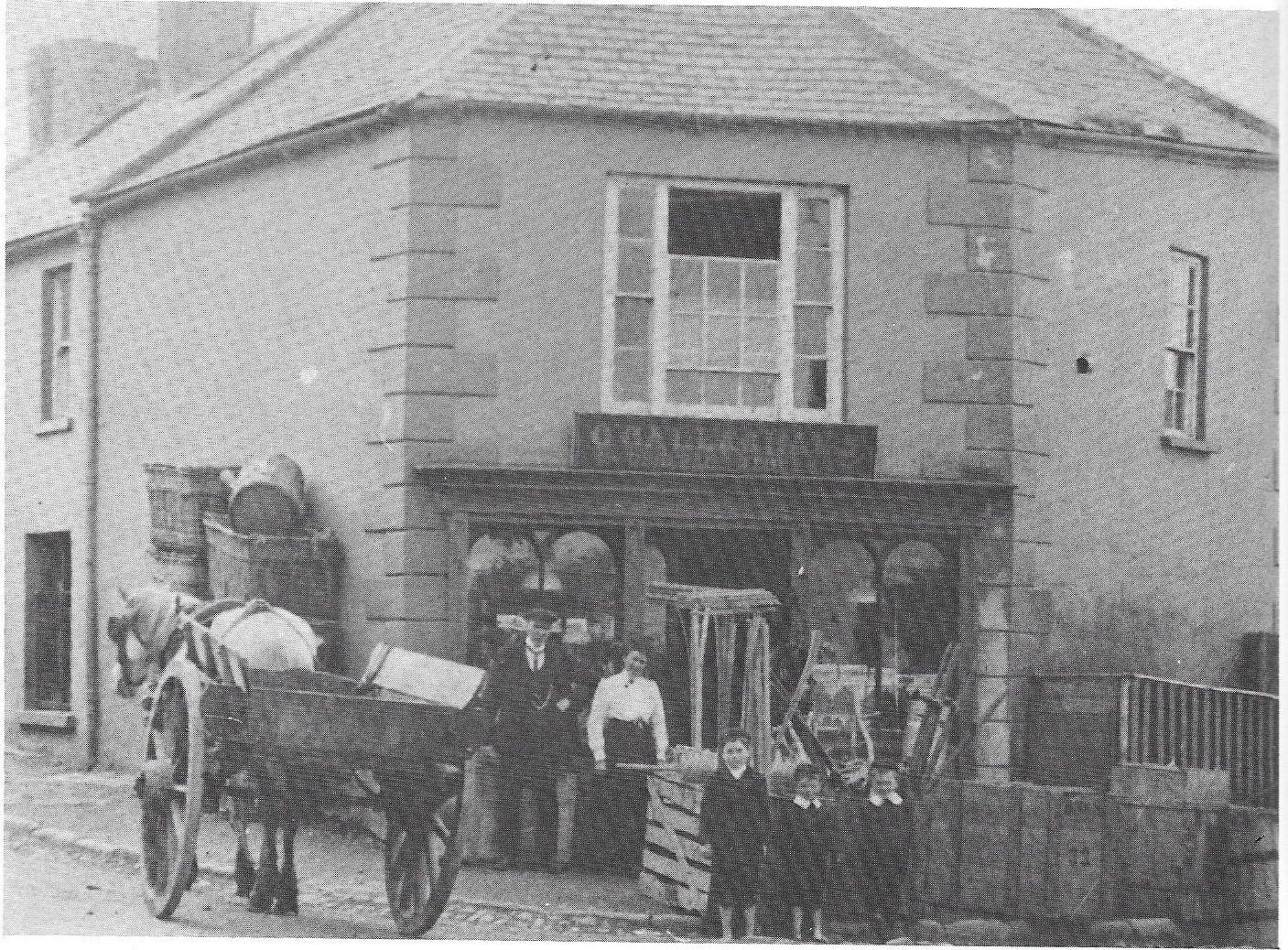
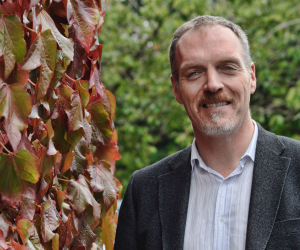


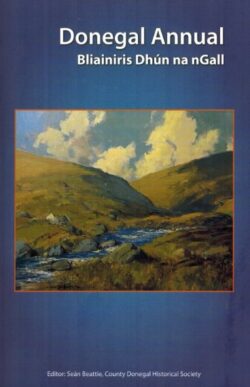
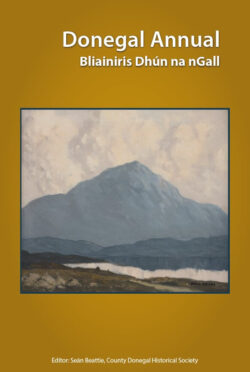
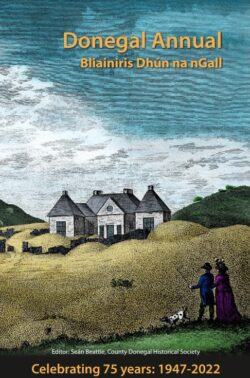
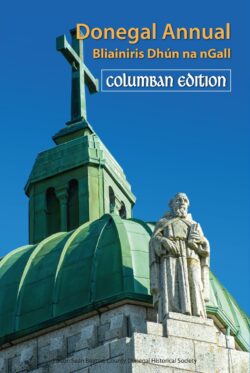
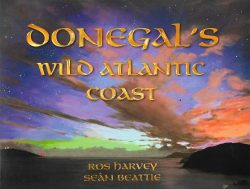
John Campbell
You might be interested in the story as I got it from my father, John Campbell, and my uncle, William Campbell, who got it from their father, William Campbell, that his grandfather or great-grandfather saved a priest who was being hunted by the English. The man hid the priest in a shed and his wife took him into the house and fed him and gave him clothes. The family had once lived at Carndoagh and Collon.
My father, Uncle Bill and cousin Robbie went back to Carndonagh sometime in the 1960s for a few days. They found what they thought was the old house but the people there didn’t want to take them on and were a bit suspicious.
But when they went in to a place for a cup of tea, the folk there were nice to them. I think it was maybe a parish hall or a community place. There was a mural or a painting that showed the Campbell saving the bishop. They hadn’t known unti then that the priest that their ancestor had saved was a bishop. When they asked about it a man took a great interest in them. He told them more details of the story and told them that the Bishop had given the family a blessing and said that there would always be Campbells in that place and that they would do well. When my father said that maybe the blessing had worn off by now, because the family had moved to Scotland, the man told them that there were McCallions in it now and said “Sure that’s just the Irish for Campbell.”
I think it was at that time that they found out about the book Inishowen: It’s History, Traditions and Antiquities. The story in the book is different from the story handed down in the family. We didn’t know about the priest being a bishop, or about the horse or the urgency of the escape. We had it that the family had hidden the priest for a period of time and looked after him.
i therefore can’t be sure that Joseph Campbell is our ancestor. Maybe the story got muddled over the years or maybe they were the people who had hidden the priest in the first place, maybe relatives of Joseph’s?
The family left after there was some trouble. They had always got on well with their neighbours who were mostly catholics, Then one night some young men came and broke the windows. My grandfather’s mother saw them. They had hankies over their faces and the collars of their jackets turned up but she recognised the sons of some of her friends among them.
She never got over the shock and they decided to leave the place and go to Scotland. My grandfather was just a wee laddie at the time so I suppose that must have been in the 1880s or early 90s.
They must have kept some connection with the place because my grandfather’s brothers were all asked to sign a document authorising one of them to handle the sale of a farm. That would have been quite a few years after they came to Scotland because they were grown men by this time. The brother who was allowed to act for them sold the farm and disappeared, leaving a wife and children in Scotland.
As far as I know, all our Campbells left Carndonagh and came to Scotland.
historyofdonegal
Thanks for taking the time to send me this interesting account of the Bishop in hiding. Obviously all stories get some variation in the telling but the basic facts which you state and the Magtochair version are fundamentally the same: the family gave succour to a clergyman on the run. It may not have been obvious to them at the time he was a bishop as churchmen travelled in disguise and were forbidden to wear religious insignia.
The breaking of the windows may have been related to the Land War 1879-82. The perpetrators would have acted indiscriminately in the belief that the family was not supporting their objectives. People of all religious persuasions suffered including Catholics in this manner.
You can rest assured that among the ordinary law-abiding members of the community, Joseph Campbell was highly respected for what he had done. Michael Harkin (Magtochair) makes this very clear and he is trustworthy in my opinion. You have very sound evidence for believing that Joseph Campbell was an ancestor.
John Campbell
Many thanks indeed for your kind response to my post.
I wish I could remember more of the story as it came down through the family. I don’t think they knew the name Joseph Campbell until they went back to Carndonagh that time in the 1960s. They were very shy people and they didn’t really expect that one of their ancestors would be so well remembered. They enjoyed their tea at the community centre and they got on with the folk there. Could that have been the Colgan Hall? I see that on the internet. They were a bit embarrassed by the attention and I think that is what might have made them slightly sceptical that it really was their ancestor had saved Bishop McColgan.
But that their folk had saved a priest they had no doubt at all. None. They had always known that. It was something that they were very proud of in their own quiet way. For them though, it was an anonymous group of the family that had been involved. The only individual mentioned was woman of the house. She was the one they remembered. I was told some of the words she spoke to the priest and what he said to her. I wish I could remember but I can’t now.
It had to do with him not wanting to come in to the house. He didn’t want to get them involved. If he stayed outside then it would be safer for them. But she made him come in and take something to eat. I think it was warm milk and bread. He was in quite a bad way when they found him. She gave him clothes. There was some humour in the situation though because he wouldn’t put off his clothes and she had to persuade him. The exact words I can’t remember now but it was to do with her authority as the woman of the house. The priest wasn’t wanting to do what he was told and she had to to be firm with him but still let him keep his dignity. He offered some payment, which was refused and her saying he might need it yet. He offered a blessing that she accepted but with some turn of phrase that showed her spirit in some way. The bowl he used was kept for a long time after and showed to visitors. The priest had something that showed who he was but whether it was an object or an item of clothing, I can’t remember. Whatever it was, they asked him to hide it but he wouldn’t.
I wish my Dad could have seen you website. He died in 2006 at the age of 86. He was born in Scotland but always considered himself Irish. He was often on the internet in his last years trying to find out more about his Donegal connections and he would have loved your website and been delighted to communicate with you.
He tried to work out a family tree but at that time there wasn’t so much material online as there is now. I see a post by a lady, Patricia Faulkner, who is Jospeh Campbell’s great- great granddaughter. I wonder if she might have more details of the story and what was was said?
http://historyofdonegal.wordpress.com/contact/
I have found a website that has a family tree of Campbells from the area descended from a Joseph Campbell in Collin with some photographs too. Here is the url.
http://freepages.genealogy.rootsweb.ancestry.com/~campbell/GedHTree/ghtout/gp180.htm#head2
I don’t see a great family resemblance. We all have pointy ears and Dad and Uncle Bill and Auntie May all had what I think of as a Donegal look about the cheeks and eyes. I’ve seen a similar look on people’s faces even away to the west in Donegal. I hope that doesn’t sound like a daft thing to say. It’s just when you see such a strong resemblance to your own family it makes you wonder. I’ve also seen it in Argyllshire, where they thought they originated. Then again, since clan Campbell were associated so much with Argyle it might not be a story that came down in the family but something that they had read about or had acquired through the years.
It would be very interesting to find out where they came from, how they came to be in Collin. It is interesting what is conveyed in family stories. At no time did I realise from anything I heard or was told, that they lived so close to the sea. The sea just didn’t enter the picture. No mention of kelp or of boats. Nothing to do with the sea at all. They did talk about farming and cattle though. That must have been very important for them.
In the story about the priest they help him escape from the English. I wonder if that is literally true or if it is a later addition. I wonder too if they meant the Anglican church authorities. They always called it the English church and they seemed much closer to the Catholics. Some of them married Catholics and Dad always had catholic friends. He was very saddened when he lost his friend Michael who was a priest. I think he was from Cork. He had gone back to Ireland for a holiday but died.
I also wonder if the story about the windows being broken by Catholics was a later interpretation influenced by the 20th century troubles. The important part seems to have been that some of their friends and neighbours were involved.
I think you must be right about the time scale. My father was born in 1918. He was twenty years younger than Uncle Bill who was the eldest. That would mean my grandfather married maybe in the 1890s and might have been born in the 1870s. I can’t remember now if he was two years old or five when they came to Scotland. I think they went to America first. His father met a lassie on the boat to America. I think she might have been Scottish. They got married in New York, I think in 1856, and had some business with cattle. I think they were buying cattle and bringing them to New York. Then they went back to Carndonagh and then they left for Scotland. But I might be confusing different generations.
I never met my grandfather Campbell. My mother told me he spoke with an Irish accent although he had lived most of his life in Scotland. But then my father disagreed with that, saying it was an ordinary Glenboig accent he had.
But the older folk in Glenboig in Scotland where they were from often had what sounded like an Irish accent. Most of the families came from Ireland and most of them from Donegal.
My cousin told me that my grandfather could understand some Irish, which my father again said was not true, but Robbie told me he was with his grandfather often when he used to listen to Irish on the radio. Not Scottish Gaelic, Irish. Grandfather Campbell used to get angry when there was displays of Irish dancing which are still common at Highland Games. He thought it was a parody of the real thing.
I’ve found some census returns online but none of the Campbells listed there are recorded as speaking Irish. I think it is very unlikely that any of our family spoke Irish but I hope that they did.
http://www.census.nationalarchives.ie/
However, listening to the recordings of Irish speakers from Clonmany, I hear a voice quality or accent that I recognise.
http://www.smo.uhi.ac.uk/~oduibhin/doegen/acgiollachearad.htm
http://dho.ie/doegen/LA_1261d2
I once met a man called Fergusson who was an Irish speaker from the west of Insihowen who was brought up in Paisley in Scotland and he had an accent similar to the Glenboig folk.
At one time I thought all presbyterians must be planters and were put there by he Scottish and English governments precisely because they were English speakers. I’ve since found out that that wasn’t always the case. Some of the planters were Gaelic speakers from Scotland and some of them weren’t planted, the clans held lands in Scotland and in Ireland.
But I think that’s going back a long way. I have no reason to believe that any of our crowd spoke Irish but it is interesting to wonder how they managed in a bilingual community and how they managed earlier on, when most people spoke Irish.
Anyhow, that’s maybe getting away from the point of this thread.
Many thanks again for your website that is clearly a labour of love and much appreciated.
Go raibh mile maith agat. Ni riabh mi fhein riamh i gCarn Donagh ach bu fior mhaith leam a dhol ann airson saor-laithean ar rothair mus fhas mi ro shean.
Slan go foill.
Seon Caimbeul
historyofdonegal
John
Thanks again. This is a great story, accurately recorded with abundant folklore. By adding this information on the web we are keeping the story alive. By doing so we improve the chances of new information coming forward as folklore and history are as unpredictable as volcanic ash – one never knows what’s next.
Patricia faulkner
Hi John.
Hi John. If you contact me I may be able to help you find “your roots” Sorry it took me so long in replying to your post.
Patricia Faulkner. (nee Campbell)
If you get in touch with me I may be able to help you find “your roots”
If you get in touch with me I may be able to help you find “your roots”. My branch of the Campbells are
I know how frustrating genealogy can be,so I am willing to help you in your search. In my possession I have the Family Bible with births going back to my grandfather’s birth in 1810 to the present day. It’s not a “tree” as such
I did a lot of research on the Campbells of Carndoagh last year and was helped hugely by Mr. Sean Beattie. Owing to illness in the family I had to give it up for a while as it’s so time consuming. I know how frustrating genealogy is so I am offering you some help.
John Campbell
Many thanks Patricia, that’s really very encouraging indeed. I just wish my Dad was still around as he could have added a lot more information. He had some of the family tree on a computer programme called Brother’s Keeper but unfortunately that’s all lost now.
Best regards,
John Campbell
Patricia Faulkner
Hi John..
If I had your contact address, or phone number I will send you photo-copies of the Campbell files that I have.
Patricia.
historyofdonegal
Thanks Patricia
Hill Grove
Culdaff
Co Donegal
John Campbell
Many thanks Patricia,
I’d hoped to find a copy of some of our family tree. I thought I had a print out of part of it but I cant find anything. I had hoped that that would at least give us a starting point to identify our line. I would certainly appreciate any advice you can give. My email address is seoncaimbeul@aol.com
Best regards,
John
historyofdonegal
John
I have documents here for you and will forward by post
I will contact you by email
Sean
Patricia Faulkner
Hi.
Many thanks for contact recieved.-will endevour to send them as soon as possible . It will take a while to sort them out and photo-copy the relevent files
Regards.
Patricia (Pat)